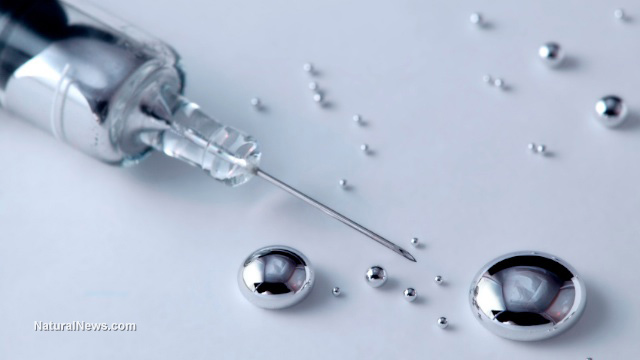Vermont sues Monsanto over toxic PCB contamination in schools
06/25/2023 / By Cassie B.

Vermont’s attorney general has filed a lawsuit against agrochemical giant Monsanto over its production and sale of toxic chemicals despite knowing that they were damaging to human health as well as the environment.
The suit is aimed at polychlorinated biphenyls, or PCBs, which have been found in some Vermont schools as well as the environment. The state is pursuing compensation for economic losses related to the contamination and its cleanup.
PCBs were used for industrial production for many years before being banned in the late 1970s. Some of their applications included dyes, caulks, sealants, lubricants, fireproofing, paints, plasticizers and coolants. They first came onto the market around 1929, and Monsanto was responsible for the manufacture of at least 99 percent of all the PCBs that were sold and used in the U.S. from 1929 to 1977.
Exposure to these chemicals causes cancer in animals and damages endocrine, reproductive and immune systems, prompting a classification by the Environmental Protection Agency as “probable human carcinogens.” Compounding their danger is the fact that they do not break down easily.
The suit alleges that Monsanto knew that the formulations were extremely toxic and prone to leaching into the environment and would lead to the widespread contamination and health problems that have ultimately come to fruition.
Attorney General Charity Clark noted: “Monsanto manufactured, marketed, sold, and distributed PCBs while knowing that its products would cause significant, long-term damage in Vermont.”
She wants the company to foot the bill for repairing the damage caused by their actions. She added: “This lawsuit seeks to hold Monsanto accountable for knowingly misleading the public about the harmful impacts of its products. The cost of cleaning up after Monsanto’s deception will be considerable and should be borne by the multibillion-dollar company that profited from the misconduct, not by Vermont taxpayers.”
According to the complaint, the chemicals are present in “dangerous” amounts in fish, wildlife and sediment throughout the state. Its presence has resulted in a fish consumption advisory for the Hoosic River and Lake Champlain, widely considered one of the state’s most beautiful natural landmarks.
In addition, the state has been spending millions of dollars to test all of its schools for contamination with PCBs after the toxin was discovered in high levels at Burlington High School and other schools. The Burlington School District filed a lawsuit of its own against Monsanto last year.
Act 74, which was passed by the Vermont Legislature in 2021, requires every school that was built before 1980 to test its indoor air for the chemicals; this testing will not be completed until July 2025. So far, around 50 schools have been tested, and a third of them have high levels of PCBs.
While many states have already sued the company over PCB contamination, Vermont is the first one to file a suit over damages in schools.
Clark said: “I am using the authority of the Office of Attorney General to recover harms done to schools that are traceable to PCBs and that has not been done before.”
More school districts set to sue Monsanto
Vermont’s Attorney General and the Burlington School District will soon be joined by several other school districts in suing Monsanto. Pietro Lynn of Lynn Lynn Blackman & Manitsky has been retained by several school districts throughout Vermont and will file a suit in the next few weeks over PCBs.
In an interview, he said: “Who bears the risk of cleanup for a product that was sold by Monsanto? Is it going to be Vermont schools and Vermont communities, or is it going to be Monsanto? We think it ought to be Monsanto.”
Sources for this article include:
Submit a correction >>
Tagged Under:
environ, Monsanto, PCBs, poisons, toxic chemicals, toxins, Vermont
This article may contain statements that reflect the opinion of the author
RECENT NEWS & ARTICLES
Chemicals.News is a fact-based public education website published by Chemicals News Features, LLC.
All content copyright © 2018 by Chemicals News Features, LLC.
Contact Us with Tips or Corrections
All trademarks, registered trademarks and servicemarks mentioned on this site are the property of their respective owners.




















